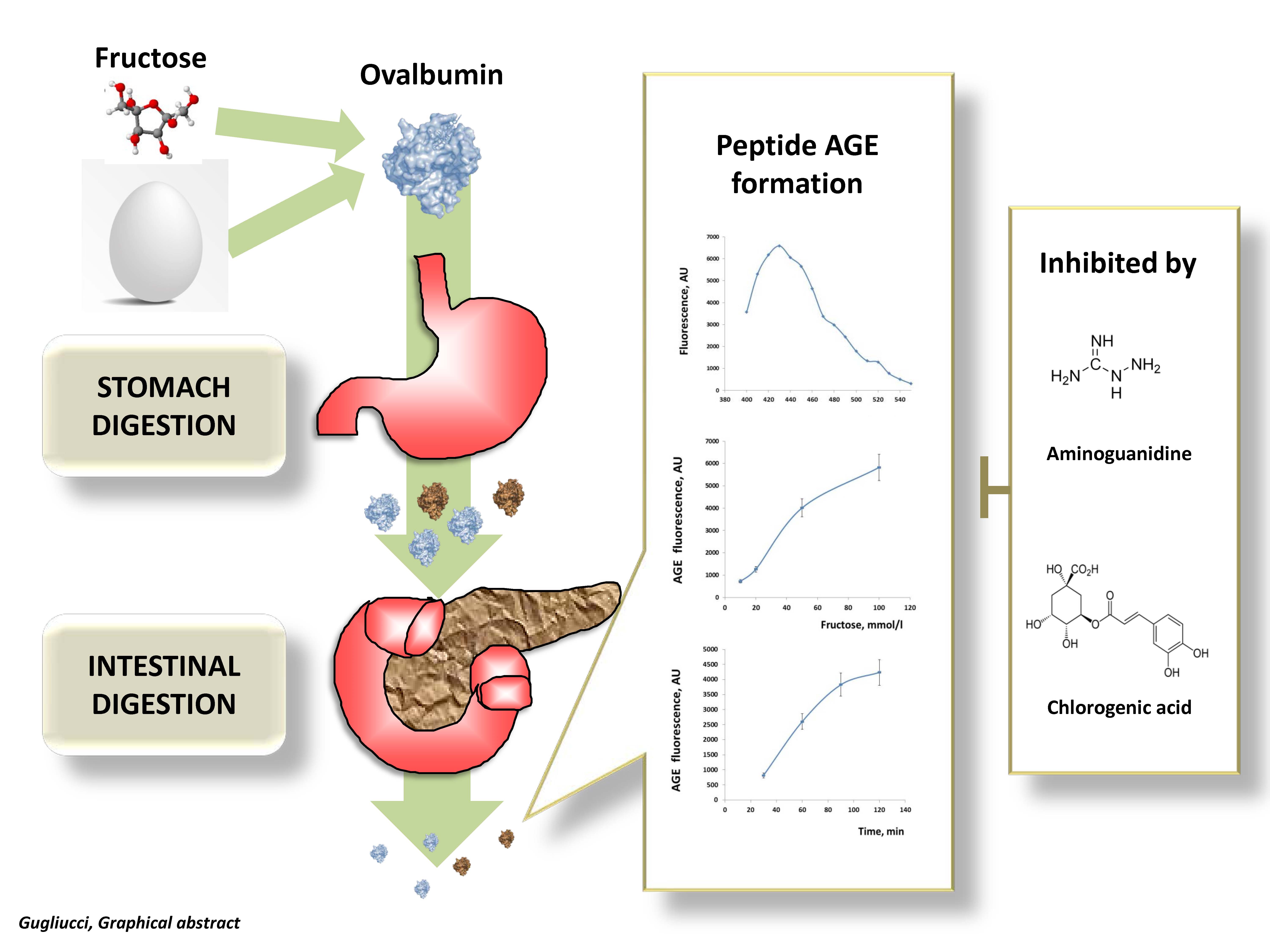One mechanism by which fructose could exert deleterious effect in metabolism and inflammation is via its potency vis-à-vis de Maillard reaction. We employed simulated stomach and duodenum digestion of ovalbumin to test the hypothesis that indeed AGEs are formed by fructose during simulated digestion of an ubiquitous food protein with intrinsic allergenic potential and under model physiological conditions. Methods: OVA was subjected to simulated gastric and intestinal digestion using standard models, in presence of fructose or glucose (0-100 mM). Peptide fractions were analyzed by fluorescence spectroscopy and intensity at Excitation: λ370 nm, Emission: λ 440nm. Results: AGE adducts form between fructose and OVA which can be found in peptide fractions (< 5 kDa) at times (30 min) and concentration ranges (10 mM) plausibly found in the intestines, whereas no reaction occurs with glucose. The reaction is inhibited by chlorogenic acid at concentrations compatible with those found in the gut. The reaction is inhibited by AG, a specific antiglycation agent. Conclusion: Our proof of principle study shows that fructose-AGE formation on an ubiquitous allergenic protein indeed occurs in one hour and thereby may pave the way for the study of yet another mechanism by which the excess fructose in our Western diets is contributing to disease: intestinal AGE formation, absorption and RAGE engagement.

